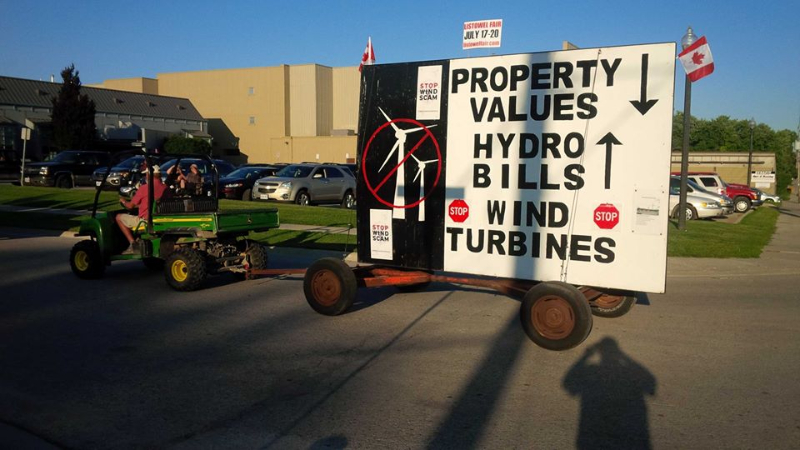Critique of
Wind Energy Study – Effect on Real Estate Values
in the Municipality of Chatham-Kent, Ontario
Authors: Canning et al
By Wayne Gulden wayne@windfarmrealities.org
February 23, 2010
Introduction
This introduction is very similar to what I wrote in my critique of the Hoen study, available at http://windfarmrealities.org/wfr-docs/hoen-critique.pdf , so feel free to skip this one if you’ve read the other.
The issue of wind turbines and their effect upon nearby property values has long been a contentious one, and for good reason. We generally accept the “wisdom of the market”, and if wind turbines are as disruptive as opponents claim, surely this would show up in market prices of nearby properties. Opponents, politicians and wind developers can make all sorts of statements about noise, flicker, birds and so on, but talk is cheap. House prices, on the other hand, can be quite dear, and there’s no easy or cheap way to hide the effect of wind turbines on house prices if in fact there is an effect. Plus house prices can serve as a single and quantitative proxy for all the effects that wind turbines may have on the neighbors.
Given the long history of the real estate industry figuring out house prices (commonly called “comps”) you’d think this issue would be easily settled. Unfortunately, it is possible to arrange the data in these studies to suit the sponsor – as Mark Twain famously observed, “figures don’t lie, but liars figure”. But couldn’t one just take the prices of houses sold “in the area” before and after a project went in? But how big should “the area” be? And if there’s only a small number of sales – these are, after all, generally remote areas – what conclusions can you draw?
For the wind industry and its allies in government and academic circles, persuasive studies showing no effect would go a long way to quiet the protests of the neighbors and make wind projects easier, quicker and cheaper to install. Almost needless to say, they have been working on such studies for a number of years. A major one was the REPP study (aka Sterzinger et al), and which is available at http://windfarmrealities.org/wfr-docs/reppreport.pdf . It was not persuasive (except among wind proponents), having used a large and undefined area in which most homes were so far from the project that any effect would be minimal. But the REPP study did reveal the underlying argument the wind industry could use to try to convince the willing and the gullible. They justified the large study area by asserting the main problem with turbines was how they looked. So if you could just see them (and you can see them for miles) they ought to affect the prices and since there was no measureable effect on prices there must be no problems whatever with the turbines. Nice logic, if you can convince someone to accept it, and many politicians and reporters have done so.





